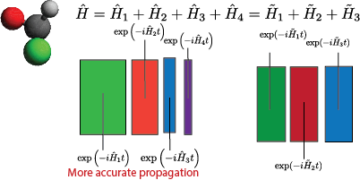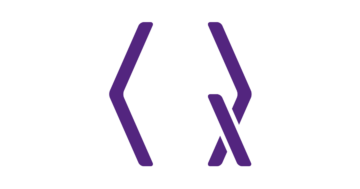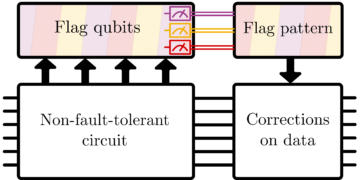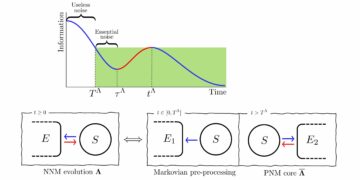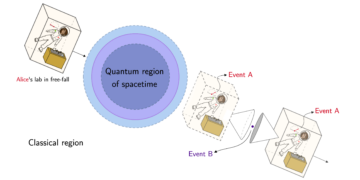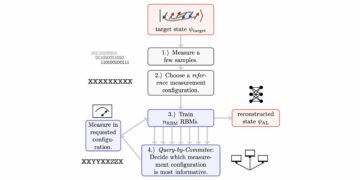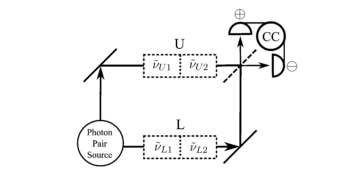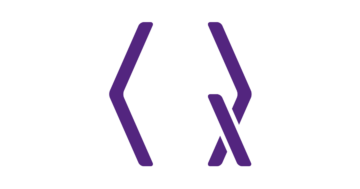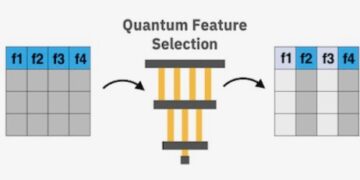1Quandela, 7 Rue Léonard de Vinci, 91300 Massy, France
2Université Paris-Saclay, Inria, CNRS, ENS Paris-Saclay, CentraleSupélec, LMF, 91190, 15 Gif-sur-Yvette, France
3Centre for Nanosciences and Nanotechnology, CNRS, Université Paris-Saclay, UMR 9001, 10 Boulevard Thomas Gobert, 91120, Palaiseau, France
4Département de Physique de l’Ecole Normale Supérieure – PSL, 45 rue d’Ulm, 75230, Paris Cedex 05, France
Find this paper interesting or want to discuss? Scite or leave a comment on SciRate.
Abstract
We introduce $Perceval$, an open-source software platform for simulating and interfacing with discrete-variable photonic quantum computers, and describe its main features and components. Its Python front-end allows photonic circuits to be composed from basic photonic building blocks like photon sources, beam splitters, phase-shifters and detectors. A variety of computational back-ends are available and optimised for different use-cases. These use state-of-the-art simulation techniques covering both weak simulation, or sampling, and strong simulation. We give examples of $Perceval$ in action by reproducing a variety of photonic experiments and simulating photonic implementations of a range of quantum algorithms, from Grover’s and Shor’s to examples of quantum machine learning. $Perceval$ is intended to be a useful toolkit for experimentalists wishing to easily model, design, simulate, or optimise a discrete-variable photonic experiment, for theoreticians wishing to design algorithms and applications for discrete-variable photonic quantum computing platforms, and for application designers wishing to evaluate algorithms on available state-of-the-art photonic quantum computers.
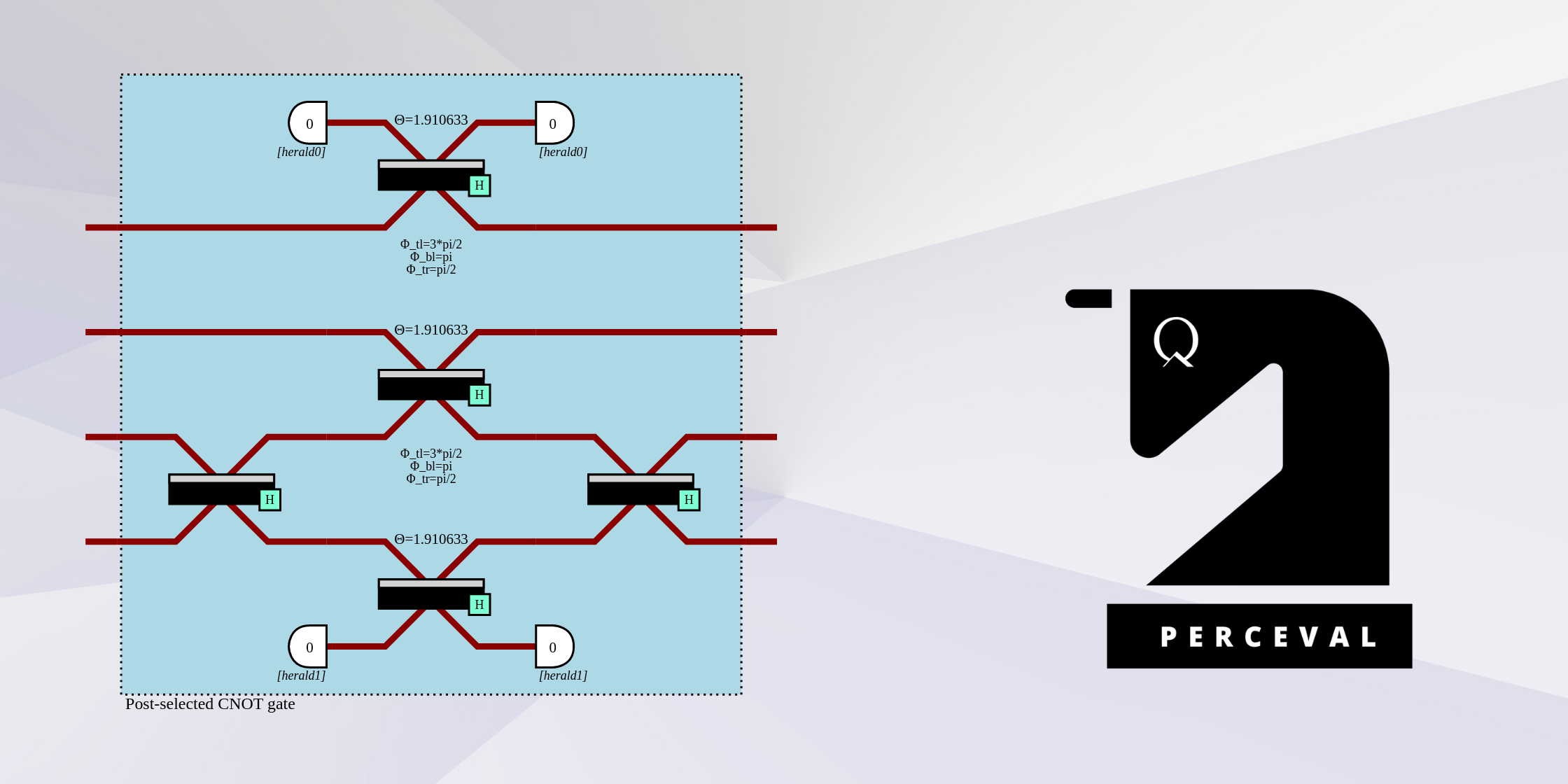
Popular summary
Perceval is a software framework that allows users to define quantum processes and computations at the level of single photons. It also has connectors that allow hardware-agnostic code from other software frameworks for quantum computing to be translated to the photonic setting. Once a quantum computation has been defined it can be run on a variety of ways. In particular it can be delegated to a real photonic quantum processor.
Computations can also be run on any of Perceval’s highly-optimised simulation backends, which essentially allow classical computers to simulate the behaviour of a quantum processor. Although classical simulation will not be possible indefinitely as quantum hardware scales up, it is an important intermediate that unlocks barriers to quantum computing in the near-term, for educational purposes and for the design and testing of quantum algorithms and protocols.
► BibTeX data
► References
[1] Shor, P., “Algorithms for quantum computation: discrete logarithms and factoring,” in Proceedings 35th Annual Symposium on Foundations of Computer Science, pp. 124–134. IEEE, Nov., 1994.
https://doi.org/10.1109/SFCS.1994.365700
[2] Grover, L.K., “A fast quantum mechanical algorithm for database search,” in Proceedings of the twenty-eighth annual ACM symposium on Theory of Computing, STOC ’96, pp. 212–219. Association for Computing Machinery, July, 1996.
https://doi.org/10.1145/237814.237866
[3] Preskill, J., “Quantum computing in the NISQ era and beyond,” Quantum 2, 79 (2018).
https://doi.org/10.22331/q-2018-08-06-79
[4] Preskill, J., “Quantum computing and the entanglement frontier,” arXiv:1203.5813 [quant-ph] (2011).
arXiv:1203.5813
[5] Arute, F., Arya, K., Babbush, R., Bacon, D. et al, “Quantum supremacy using a programmable superconducting processor,” Nature 574, 505–510 (2019).
https://doi.org/10.1038/s41586-019-1666-5
[6] Zhong, H.S., Wang, H., Deng, Y.H., Chen, M.C. et al, “Quantum computational advantage using photons,” Science 370, 1460–1463 (2020).
https://doi.org/10.1126/science.abe8770
[7] Wu, Y., Bao, W.S., Cao, S., Chen, F. et al, “Strong quantum computational advantage using a superconducting quantum processor,” Physical Review Letters 127, 180501 (2021).
https://doi.org/10.1103/PhysRevLett.127.180501
[8] Zhong, H.S., Deng, Y.H., Qin, J., Wang, H. et al, “Phase-programmable Gaussian Boson Sampling using stimulated squeezed light,” Physical Review Letters 127, 180502 (2021). Publisher: American Physical Society.
https://doi.org/10.1103/PhysRevLett.127.180502
[9] Madsen, L.S., Laudenbach, F., Askarani, M.F., Rortais, F. et al, “Quantum computational advantage with a programmable photonic processor,” Nature 606, 75–81 (2022).
https://doi.org/10.1038/s41586-022-04725-x
[10] Nikolopoulos, G.M. and Brougham, T., “Decision and function problems based on Boson Sampling,” Physical Review A 94, 012315 (2016).
https://doi.org/10.1103/PhysRevA.94.012315
[11] Nikolopoulos, G.M., “Cryptographic One-Way Function based on Boson Sampling,” Quantum Information Processing 18, 259 (2019).
https://doi.org/10.1007/s11128-019-2372-9
[12] Banchi, L., Fingerhuth, M., Babej, T., Ing, C. and Arrazola, J.M., “Molecular docking with Gaussian Boson Sampling,” Science Advances 6, eaax1950 (2020).
https://doi.org/10.1126/sciadv.aax1950
[13] Peruzzo, A., McClean, J., Shadbolt, P., Yung, M.H. et al, “A variational eigenvalue solver on a photonic quantum processor,” Nature Communications 5, 4213 (2014).
https://doi.org/10.1038/ncomms5213
[14] Gan, B.Y., Leykam, D. and Angelakis, D.G., “Fock State-enhanced expressivity of Quantum Machine Learning models,” in Conference on Lasers and Electro-Optics, p. JW1A.73. Optica Publishing Group, 2021.
https://doi.org/10.1364/CLEO_AT.2021.JW1A.73
[15] Farhi, E., Goldstone, J. and Gutmann, S., “A Quantum Approximate Optimization Algorithm,” arXiv:1411.4028 [quant-ph] (2014).
https://doi.org/10.48550/arXiv.1411.4028
arXiv:1411.4028
[16] Bharti, K., Cervera-Lierta, A., Kyaw, T.H., Haug, T. et al, “Noisy intermediate-scale quantum algorithms,” Rev. Mod. Phys. 94, 015004 (2022).
https://doi.org/10.1103/RevModPhys.94.015004
[17] Cao, Y., Romero, J., Olson, J.P., Degroote, M. et al, “Quantum chemistry in the age of quantum computing,” Chemical Reviews 119, 10856–10915 (2019).
https://doi.org/10.1021/acs.chemrev.8b00803
[18] McArdle, S., Endo, S., Aspuru-Guzik, A., Benjamin, S.C. and Yuan, X., “Quantum computational chemistry,” Rev. Mod. Phys. 92, 015003 (2020).
https://doi.org/10.1103/RevModPhys.92.015003
[19] Jiang, Z., Sung, K.J., Kechedzhi, K., Smelyanskiy, V.N. and Boixo, S., “Quantum algorithms to simulate many-body physics of correlated fermions,” Phys. Rev. Applied 9, 044036 (2018).
https://doi.org/10.1103/PhysRevApplied.9.044036
[20] Davoudi, Z., Hafezi, M., Monroe, C., Pagano, G. et al, “Towards analog quantum simulations of lattice gauge theories with trapped ions,” Phys. Rev. Research 2, 023015 (2020).
https://doi.org/10.1103/PhysRevResearch.2.023015
[21] Vikstål, P., Grönkvist, M., Svensson, M., Andersson, M. et al, “Applying the Quantum Approximate Optimization Algorithm to the tail-assignment problem,” Phys. Rev. Applied 14, 034009 (2020).
https://doi.org/10.1103/PhysRevApplied.14.034009
[22] Zhu, L., Tang, H.L., Barron, G.S., Calderon-Vargas, F.A. et al, “An adaptive quantum approximate optimization algorithm for solving combinatorial problems on a quantum computer,” arXiv.2005.10258 [quant-ph] (2020).
https://doi.org/10.48550/ARXIV.2005.10258
[23] Schuld, M., Brádler, K., Israel, R., Su, D. and Gupt, B., “Measuring the similarity of graphs with a Gaussian Boson sampler,” Phys. Rev. A 101, 032314 (2020).
https://doi.org/10.1103/PhysRevA.101.032314
[24] Huang, H.Y., Broughton, M., Cotler, J., Chen, S. et al, “Quantum advantage in learning from experiments,” arXiv.2112.00778 [quant-ph] (2021).
https://doi.org/10.48550/ARXIV.2112.00778
[25] Knill, E., Laflamme, R. and Milburn, G.J., “A scheme for efficient quantum computation with linear optics,” Nature 409, 46–52 (2001).
https://doi.org/10.1038/35051009
[26] Kieling, K., Rudolph, T. and Eisert, J., “Percolation, renormalization, and quantum computing with nondeterministic gates,” Physical Review Letters 99, 130501 (2007).
https://doi.org/10.1103/PhysRevLett.99.130501
[27] Bartolucci, S., Birchall, P., Bombin, H., Cable, H. et al, “Fusion-based quantum computation,” arXiv:2101.09310 [quant-ph] (2021).
https://doi.org/10.48550/arXiv.2101.09310
arXiv:2101.09310
[28] Aaronson, S. and Arkhipov, A., “The computational complexity of linear optics,” in Proceedings of the forty-third annual ACM symposium on Theory of computing, STOC ’11, pp. 333–342. Association for Computing Machinery, June, 2011.
https://doi.org/10.1145/1993636.1993682
[29] Killoran, N., Izaac, J., Quesada, N., Bergholm, V. et al, “Strawberry Fields: A software platform for photonic quantum computing,” Quantum 3, 129 (2019).
https://doi.org/10.22331/q-2019-03-11-129
[30] Fingerhuth, M., Babej, T. and Wittek, P., “Open source software in quantum computing,” PLOS ONE 13, e0208561 (2018).
https://doi.org/10.1371/journal.pone.0208561
[31] tA v, A., ANIS, M.S., Abby-Mitchell, Abraham, H. et al, “Qiskit: An Open-source Framework for Quantum Computing,” 2021.
[32] Aguado, D.G., Gimeno, V., Moyano-Fernández, J.J. and Garcia-Escartin, J.C., “QOptCraft: A Python package for the design and study of linear optical quantum systems,” arXiv.2108.06186 [quant-ph] (2021).
https://doi.org/10.48550/arxiv.2108.06186
[33] Kok, P., Munro, W.J., Nemoto, K., Ralph, T.C. et al, “Linear optical quantum computing with photonic qubits,” Rev. Mod. Phys. 79, 135–174 (2007).
https://doi.org/10.1103/RevModPhys.79.135
[34] Kok, P. and Lovett, B.W., “Introduction to optical quantum information processing,”. Cambridge University Press, 2010.
https://doi.org/10.1017/CBO9781139193658
[35] Reck, M., Zeilinger, A., Bernstein, H.J. and Bertani, P., “Experimental realization of any discrete unitary operator,” Phys. Rev. Lett. 73, 58–61 (1994).
https://doi.org/10.1103/PhysRevLett.73.58
[36] Clements, W.R., Humphreys, P.C., Metcalf, B.J., Kolthammer, W.S. and Walmsley, I.A., “Optimal design for universal multiport interferometers,” Optica 3, 1460–1465 (2016).
https://doi.org/10.1364/OPTICA.3.001460
[37] Chekhova, M. and Banzer, P., “Polarization of Light: In Classical, Quantum, and Nonlinear Optics,”. De Gruyter, 2021.
[38] Valiant, L.G., “The complexity of computing the permanent,” Theoretical Computer Science 8, 189–201 (1979).
https://doi.org/10.1016/0304-3975(79)90044-6
[39] Spedalieri, F., Lee, H., Lee, H., Dowling, J. and Dowling, J., “Linear optical quantum computing with polarization encoding,” in Frontiers in Optics (2005), paper LMB4, p. LMB4. Optica Publishing Group, Oct., 2005.
https://doi.org/10.1364/LS.2005.LMB4
[40] Clifford, P. and Clifford, R., “The classical complexity of Boson Sampling,” in Proceedings of the 2018 Annual ACM-SIAM Symposium on Discrete Algorithms (SODA), Proceedings, pp. 146–155. Society for Industrial and Applied Mathematics, Jan., 2018.
https://doi.org/10.1137/1.9781611975031.10
[41] Glynn, D.G., “The permanent of a square matrix,” European Journal of Combinatorics 31, 1887–1891 (2010).
https://doi.org/10.1016/j.ejc.2010.01.010
[42] Clifford, P. and Clifford, R., “Faster classical Boson Sampling,” arXiv:2005.04214 [quant-ph] (2020).
https://doi.org/10.48550/arXiv.2005.04214
arXiv:2005.04214
[43] Ryser, H.J., “Combinatorial mathematics,”, vol. 14. American Mathematical Society, 1963.
https://bookstore.ams.org/car-14
[44] Gupt, B., Izaac, J. and Quesada, N., “The Walrus: a library for the calculation of hafnians, Hermite polynomials and Gaussian boson sampling,” Journal of Open Source Software 4, 1705 (2019).
https://doi.org/10.21105/joss.01705
[45] Heurtel, N., Mansfield, S., Senellart, J. and Valiron, B., “Strong Simulation of Linear Optical Processes,” arXiv:2206.10549 [quant-ph] (2022).
arXiv:2206.10549
[46] Ralph, T.C., Langford, N.K., Bell, T.B. and White, A.G., “Linear optical controlled-NOT gate in the coincidence basis,” Physical Review A 65, 062324 (2002).
https://doi.org/10.1103/PhysRevA.65.062324
[47] Hong, C.K., Ou, Z.Y. and Mandel, L., “Measurement of subpicosecond time intervals between two photons by interference,” Physical Review Letters 59, 2044–2046 (1987). Publisher: American Physical Society.
https://doi.org/10.1103/PhysRevLett.59.2044
[48] Santori, C., Fattal, D., Vučković, J., Solomon, G.S. and Yamamoto, Y., “Indistinguishable photons from a single-photon device,” Nature 419, 594–597 (2002).
https://doi.org/10.1038/nature01086
[49] Giesz, V., Cavity-enhanced photon-photon interactions with bright quantum dot sources. Theses, Université Paris Saclay (COmUE), Dec., 2015.
https://tel.archives-ouvertes.fr/tel-01272948
[50] Mezher, R. and Mansfield, S., “Assessing the quality of near-term photonic quantum devices,” arXiv:2202.04735 [quant-ph] (2022).
https://doi.org/10.48550/arXiv.2202.04735
arXiv:2202.04735
[51] Brualdi, R.A. and Ryser, H.J., “Combinatorial Matrix Theory,”. Encyclopedia of Mathematics and its Applications. Cambridge University Press, 1991.
https://doi.org/10.1017/CBO9781107325708
[52] Aaronson, S. and Brod, D.J., “BosonSampling with lost photons,” Phys. Rev. A 93, 012335 (2016).
https://doi.org/10.1103/PhysRevA.93.012335
[53] Arkhipov, A., “BosonSampling is robust against small errors in the network matrix,” Phys. Rev. A 92, 062326 (2015).
https://doi.org/10.1103/PhysRevA.92.062326
[54] Kalai, G. and Kindler, G., “Gaussian noise sensitivity and Boson Sampling,” arXiv:1409.3093 [quant-ph] (2014).
https://doi.org/10.48550/arXiv.1409.3093
arXiv:1409.3093
[55] Russell, N.J., Chakhmakhchyan, L., O’Brien, J.L. and Laing, A., “Direct dialling of Haar random unitary matrices,” New Journal of Physics 19, 033007 (2017).
https://doi.org/10.1088/1367-2630/aa60ed
[56] Wang, H., Qin, J., Ding, X., Chen, M.C. et al, “Boson Sampling with 20 input photons and a 60-mode interferometer in a $10^{14}$-dimensional Hilbert space,” Physical Review Letters 123, 250503 (2019).
https://doi.org/10.1103/PhysRevLett.123.250503
[57] Shchesnovich, V.S., “Universality of generalized bunching and efficient assessment of Boson Sampling,” Phys. Rev. Lett. 116, 123601 (2016).
https://doi.org/10.1103/PhysRevLett.116.123601
[58] Tichy, M.C., Mayer, K., Buchleitner, A. and Mølmer, K., “Stringent and efficient assessment of Boson-Sampling devices,” Phys. Rev. Lett. 113, 020502 (2014).
https://doi.org/10.1103/PhysRevLett.113.020502
[59] Walschaers, M., Kuipers, J., Urbina, J.D., Mayer, K. et al, “Statistical benchmark for BosonSampling,” New Journal of Physics 18, 032001 (2016).
https://doi.org/10.1088/1367-2630/18/3/032001
[60] Roy, T., Jiang, L. and Schuster, D.I., “Deterministic Grover search with a restricted oracle,” arXiv:2201.00091 [quant-ph] (2022).
https://doi.org/10.48550/arXiv.2201.00091
arXiv:2201.00091
[61] Long, G.L., “Grover algorithm with zero theoretical failure rate,” Phys. Rev. A 64, 022307 (2001).
https://doi.org/10.1103/PhysRevA.64.022307
[62] Kwiat, P.G., Mitchell, J.R., Schwindt, P.D.D. and White, A.G., “Grover’s search algorithm: An optical approach,” Journal of Modern Optics 47, 257–266 (2000).
https://doi.org/10.1080/09500340008244040
[63] Rivest, R.L., Shamir, A. and Adleman, L., “A Method for Obtaining Digital Signatures and Public-Key Cryptosystems,” Commun. ACM 21, 120–126 (1978).
https://doi.org/10.1145/359340.359342
[64] Politi, A., Matthews, J.C.F. and O’Brien, J.L., “Shor’s quantum factoring algorithm on a photonic chip,” Science 325, 1221–1221 (2009).
https://doi.org/10.1126/science.1173731
[65] Du, Y., Hsieh, M.H., Liu, T. and Tao, D., “Expressive power of parametrized quantum circuits,” Physical Review Research 2, 033125 (2020).
https://doi.org/10.1103/PhysRevResearch.2.033125
[66] Hoeffding, W., “Probability inequalities for sums of bounded random variables,” in The collected works of Wassily Hoeffding, pp. 409–426. Springer, 1994.
[67] Shadbolt, P.J., Verde, M.R., Peruzzo, A., Politi, A. et al, “Generating, manipulating and measuring entanglement and mixture with a reconfigurable photonic circuit,” Nature Photonics 6, 45–49 (2012).
https://doi.org/10.1038/nphoton.2011.283
[68] Nelder, J.A. and Mead, R., “A Simplex Method for Function Minimization,” The Computer Journal 7, 308–313 (1965).
https://doi.org/10.1093/comjnl/7.4.308
[69] O’Malley, P.J.J., Babbush, R., Kivlichan, I.D., Romero, J. et al, “Scalable quantum simulation of molecular energies,” Phys. Rev. X 6, 031007 (2016).
https://doi.org/10.1103/PhysRevX.6.031007
[70] Colless, J.I., Ramasesh, V.V., Dahlen, D., Blok, M.S. et al, “Computation of molecular spectra on a quantum processor with an error-resilient algorithm,” Phys. Rev. X 8, 011021 (2018).
https://doi.org/10.1103/PhysRevX.8.011021
[71] Harris, C.R., Millman, K.J., van der Walt, S.J., Gommers, R. et al, “Array programming with NumPy,” Nature 585, 357–362 (2020).
https://doi.org/10.1038/s41586-020-2649-2
[72] Pérez-Salinas, A., Cervera-Lierta, A., Gil-Fuster, E. and Latorre, J.I., “Data re-uploading for a universal quantum classifier,” Quantum 4, 226 (2020).
https://doi.org/10.22331/q-2020-02-06-226
[73] Schuld, M., Sweke, R. and Meyer, J.J., “Effect of data encoding on the expressive power of variational quantum-machine-learning models,” Phys. Rev. A 103, 032430 (2021).
https://doi.org/10.1103/PhysRevA.103.032430
[74] Hadfield, R.H., “Single-photon detectors for optical quantum information applications,” Nature Photonics 3, 696–705 (2009).
https://doi.org/10.1038/nphoton.2009.230
[75] Kyriienko, O., Paine, A.E. and Elfving, V.E., “Solving nonlinear differential equations with differentiable quantum circuits,” Physical Review A 103, 052416 (2021).
https://doi.org/10.1103/PhysRevA.103.052416
[76] Virtanen, P., Gommers, R., Oliphant, T.E., Haberland, M. et al, “SciPy 1.0: Fundamental Algorithms for Scientific Computing in Python,” Nature Methods 17, 261–272 (2020).
https://doi.org/10.1038/s41592-019-0686-2
[77] Raschka, S. and Mirjalili, V., “Python machine learning: Machine learning and deep learning with Python, scikit-learn, and TensorFlow 2,”. Packt Publishing Ltd, 2019.
https://www.packtpub.com/product/python-machine-learning/9781783555130
[78] Widder, D.V., “The heat equation,”, vol. 67. Academic Press, 1976.
https://www.elsevier.com/books/the-heat-equation/widder/978-0-12-748540-9
[79] Constantin, P. and Foias, C., “Navier-stokes equations,”. University of Chicago Press, 2020.
https://press.uchicago.edu/ucp/books/book/chicago/N/bo5973146.html
Cited by
[1] Rawad Mezher, Ana Filipa Carvalho, and Shane Mansfield, “Solving graph problems with single-photons and linear optics”, arXiv:2301.09594, (2023).
[2] Mathias Pont, Giacomo Corrielli, Andreas Fyrillas, Iris Agresti, Gonzalo Carvacho, Nicolas Maring, Pierre-Emmanuel Emeriau, Francesco Ceccarelli, Ricardo Albiero, Paulo H. D. Ferreira, Niccolo Somaschi, Jean Senellart, Isabelle Sagnes, Martina Morassi, Aristide Lemaitre, Pascale Senellart, Fabio Sciarrino, Marco Liscidini, Nadia Belabas, and Roberto Osellame, “High-fidelity generation of four-photon GHZ states on-chip”, arXiv:2211.15626, (2022).
[3] Benoit Seron and Antoine Restivo, “BosonSampling.jl: A Julia package for quantum multi-photon interferometry”, arXiv:2212.09537, (2022).
[4] Alexandre Clément, Nicolas Heurtel, Shane Mansfield, Simon Perdrix, and Benoît Valiron, “LOv-Calculus: A Graphical Language for Linear Optical Quantum Circuits”, arXiv:2204.11787, (2022).
[5] Alexis Toumi, Giovanni de Felice, and Richie Yeung, “DisCoPy for the quantum computer scientist”, arXiv:2205.05190, (2022).
[6] Yuan Yao, Filippo Miatto, and Nicolás Quesada, “The recursive representation of Gaussian quantum mechanics”, arXiv:2209.06069, (2022).
[7] Nicolas Heurtel, Shane Mansfield, Jean Senellart, and Benoît Valiron, “Strong Simulation of Linear Optical Processes”, arXiv:2206.10549, (2022).
[8] Felix Zilk, Korbinian Staudacher, Tobias Guggemos, Karl Fürlinger, Dieter Kranzlmüller, and Philip Walther, “A compiler for universal photonic quantum computers”, arXiv:2210.09251, (2022).
[9] Javier Osca and Jiri Vala, “Implementation of photon partial distinguishability in a quantum optical circuit simulation”, arXiv:2208.03250, (2022).
[10] Andreas Fyrillas, Boris Bourdoncle, Alexandre Maïnos, Pierre-Emmanuel Emeriau, Kayleigh Start, Nico Margaria, Martina Morassi, Aristide Lemaître, Isabelle Sagnes, Petr Stepanov, Thi Huong Au, Sébastien Boissier, Niccolo Somaschi, Nicolas Maring, Nadia Belabas, and Shane Mansfield, “Certified randomness in tight space”, arXiv:2301.03536, (2023).
The above citations are from SAO/NASA ADS (last updated successfully 2023-02-21 18:04:03). The list may be incomplete as not all publishers provide suitable and complete citation data.
Could not fetch Crossref cited-by data during last attempt 2023-02-21 18:04:01: Could not fetch cited-by data for 10.22331/q-2023-02-21-931 from Crossref. This is normal if the DOI was registered recently.
This Paper is published in Quantum under the Creative Commons Attribution 4.0 International (CC BY 4.0) license. Copyright remains with the original copyright holders such as the authors or their institutions.
- SEO Powered Content & PR Distribution. Get Amplified Today.
- Platoblockchain. Web3 Metaverse Intelligence. Knowledge Amplified. Access Here.
- Source: https://quantum-journal.org/papers/q-2023-02-21-931/
- 1
- 10
- 11
- 116
- 1994
- 1996
- 2001
- 2011
- 2012
- 2014
- 2016
- 2017
- 2018
- 2019
- 2020
- 2021
- 2022
- 2023
- 28
- 39
- 67
- 7
- 70
- 77
- 9
- a
- Able
- above
- ABSTRACT
- academic
- access
- ACM
- Action
- advances
- ADvantage
- affiliations
- against
- algorithm
- algorithms
- All
- allows
- Although
- American
- Ana
- and
- annual
- Application
- applications
- applied
- approach
- assessment
- Association
- author
- authors
- available
- barriers
- based
- basic
- basis
- Beam
- Bell
- Benchmark
- Benjamin
- between
- Beyond
- Blocks
- BLOK
- boris
- Break
- Bright
- Building
- cable
- cambridge
- Certified
- chemical
- chemistry
- chen
- chicago
- chip
- code
- coincidence
- comment
- Commons
- Communications
- complete
- complexity
- components
- composed
- computation
- computations
- computer
- computer science
- computers
- computing
- Conference
- copyright
- could
- covering
- data
- Database
- deep
- deep learning
- defined
- Den
- describe
- Design
- designers
- device
- Devices
- different
- digital
- discuss
- DOT
- during
- easily
- educational
- effects
- efficient
- ENS
- equations
- Era
- Errors
- essentially
- Ether (ETH)
- European
- evaluate
- examples
- experiment
- expressive
- Failure
- FAST
- Features
- Fields
- Foundations
- Framework
- frameworks
- from
- Frontier
- Frontiers
- full
- function
- fundamental
- Gates
- generation
- Give
- graph
- graphs
- Group
- Hardware
- harness
- harvard
- holders
- Hong
- However
- HTML
- HTTPS
- IEEE
- implementation
- important
- in
- individual
- industrial
- inequalities
- information
- ING
- input
- Inria
- institutions
- interact
- interactions
- interesting
- Intermediate
- International
- introduce
- Israel
- IT
- Jan
- JavaScript
- JL
- journal
- July
- language
- lasers
- Last
- learning
- Leave
- Lee
- Level
- Library
- License
- light
- List
- Long
- Ltd
- machine
- machine learning
- machinery
- made
- Main
- Making
- manipulating
- Marco
- mathematical
- mathematics
- Matrix
- max-width
- measuring
- mechanical
- mechanics
- Metcalf
- method
- methods
- Meyer
- minimization
- mixture
- model
- models
- Modern
- molecular
- Month
- Music
- nanotechnology
- Nature
- network
- New
- Nicolas
- Noise
- normal
- numpy
- observe
- obtaining
- Oct
- ONE
- open
- open source
- Open-source Software
- operator
- optical
- optics
- optimise
- Optimised
- optimization
- oracle
- original
- Other
- package
- Paper
- paris
- particular
- perform
- permanent
- Photons
- physical
- Physics
- platform
- Platforms
- plato
- Plato Data Intelligence
- PlatoData
- possible
- power
- press
- Problem
- problems
- Proceedings
- process
- processes
- processing
- Processor
- Programming
- protocols
- provide
- published
- publisher
- publishers
- Publishing
- purposes
- Python
- qiskit
- quality
- Quantum
- quantum algorithms
- quantum computational advantage
- Quantum Computer
- quantum computers
- quantum computing
- Quantum dot
- quantum factoring algorithm
- quantum information
- quantum machine learning
- Quantum Mechanics
- quantum systems
- qubits
- random
- randomness
- range
- Rate
- real
- realization
- recently
- Recursive
- references
- registered
- remains
- representation
- research
- restricted
- review
- Reviews
- robust
- Run
- scales
- scheme
- Science
- Scientist
- scikit-learn
- Search
- Sensitivity
- setting
- Signatures
- Simon
- Simplex
- simulation
- single
- small
- Society
- Software
- software platform
- Solving
- Source
- Sources
- Space
- square
- start
- state-of-the-art
- States
- strong
- Study
- Successfully
- such
- suitable
- sums
- Symposium
- Systems
- techniques
- tensorflow
- Testing
- The
- their
- theoretical
- time
- Title
- to
- toolkit
- under
- Universal
- university
- University of Chicago
- unlocks
- updated
- URL
- use
- use-cases
- users
- variables
- variety
- volume
- W
- ways
- which
- white
- will
- works
- world
- wu
- X
- year
- Yuan
- zephyrnet
- zero
- Zhong

